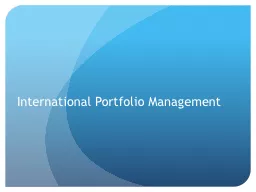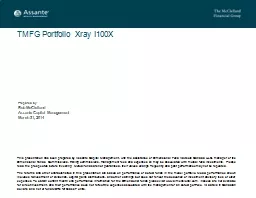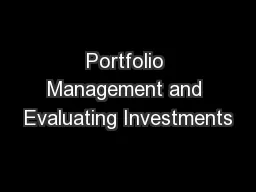PPT-International Portfolio Management
Author : marina-yarberry | Published Date : 2019-11-22
International Portfolio Management Sections Correlation structure Optimal portfolio selection The relationship among return local return and exchange rate Home
Presentation Embed Code
Download Presentation
Download Presentation The PPT/PDF document "International Portfolio Management" is the property of its rightful owner. Permission is granted to download and print the materials on this website for personal, non-commercial use only, and to display it on your personal computer provided you do not modify the materials and that you retain all copyright notices contained in the materials. By downloading content from our website, you accept the terms of this agreement.
International Portfolio Management: Transcript
Download Rules Of Document
"International Portfolio Management"The content belongs to its owner. You may download and print it for personal use, without modification, and keep all copyright notices. By downloading, you agree to these terms.
Related Documents














